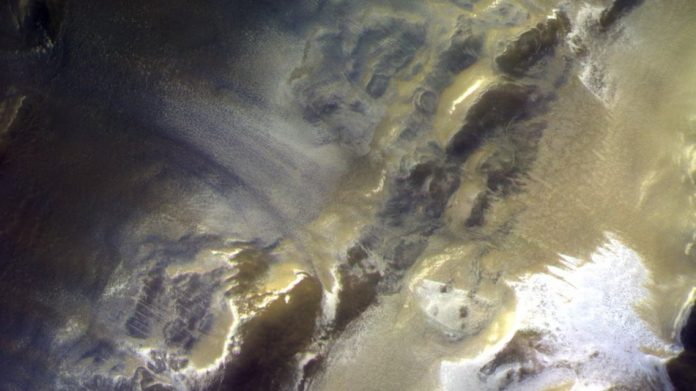The European Space Agency’s fancy new Mars orbiter only arrived at the Red Planet a few weeks ago, but it’s already delivering some really fantastic eye candy of the Martian surface.
The European Space Agency’s (ESA) ExoMars Trace Gas Orbiter just beamed home the amazing new image from April 15.
The photo was taken by the satellite’s Colour and Stereo Surface Imaging System (CaSSIS) right after the satellite moved into a new orbit about 400 kilometers above the world’s surface. The lighting is what makes it really special.
“We were really pleased to see how good this picture was, given the lighting conditions,” Antoine Pommerol, a member of the science team, said in a statement. You can see the Korolev Crater covered with ice in the planet’s northern hemisphere, according to the ESA.
These kinds of photos allow scientists to get a bird’s eye view of Mars’ water and carbon dioxide cycles, helping them understand exactly what’s going on with the planet’s geology.
The satellite itself, which arrived at Mars in 2016, is designed to sniff out gases like methane that might be indications of biology or geology on the red planet.
Scientists should be able to parse out where those trace gases come from as the mission continues.
“We are excited to finally be starting collecting data at Mars with this phenomenal spacecraft,” Håkan Svedhem, the satellite’s project scientist, said in the statement. “The test images we have seen so far certainly set the bar high.”
The satellite is part of the ExoMars mission, which is focused on helping ESA piece together the history of Mars and figuring out if life exists or has ever existed there.
In 2020, the ESA is expected to launch an ExoMars lander and rover that will investigate possible life on Mars from the surface.
The 2016 mission also included a lander component, but it didn’t quite go as planned: The ESA lost signal with the Schiaparelli lander as it reached the surface of Mars, and scientists now think the test lander was lost.
However, the agency claims to have gathered important data from the loss of the lander, and plans to correct any previous mistakes when trying to land in 2020.















